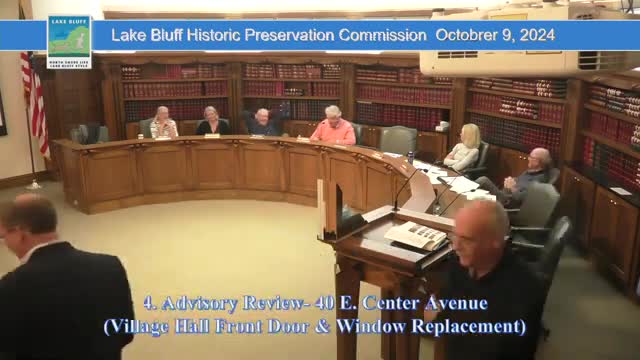Landmark building renovations spark debate over historic preservation
October 21, 2024 | Lake Bluff, Lake County, Illinois
This article was created by AI summarizing key points discussed. AI makes mistakes, so for full details and context, please refer to the video of the full meeting. Please report any errors so we can fix them. Report an error »

In a recent government meeting, officials discussed proposed alterations to a landmark building in Lake Bluff, focusing primarily on the rehabilitation of its windows. The conversation centered around the criteria for changes to protected features, which are guided by the Secretary of the Interior's standards.
The meeting highlighted the importance of adhering to established guidelines to ensure that any modifications do not compromise the building's historical and architectural integrity. Officials emphasized that the proposed changes should promote the general welfare of the village and maintain the building's essential characteristics as viewed from public streets.
Key points of discussion included the definition of \"economically viable\" in relation to potential modifications. Officials acknowledged the ambiguity of the term and its implications for decision-making regarding the preservation of historic materials. The conversation also touched on the necessity of ensuring that any alterations do not lead to the demolition of distinctive architectural elements unless absolutely necessary for economic viability.
As the meeting progressed, officials reviewed various guidelines, noting that many did not apply to the current proposal since it only involved window repairs rather than significant structural changes. The consensus leaned towards allowing the proposed plans, provided they align with the established standards and do not detract from the building's historical significance.
The meeting concluded with a commitment to further evaluate the guidelines and their application to the proposed changes, ensuring that the village's heritage is preserved while accommodating necessary updates.
The meeting highlighted the importance of adhering to established guidelines to ensure that any modifications do not compromise the building's historical and architectural integrity. Officials emphasized that the proposed changes should promote the general welfare of the village and maintain the building's essential characteristics as viewed from public streets.
Key points of discussion included the definition of \"economically viable\" in relation to potential modifications. Officials acknowledged the ambiguity of the term and its implications for decision-making regarding the preservation of historic materials. The conversation also touched on the necessity of ensuring that any alterations do not lead to the demolition of distinctive architectural elements unless absolutely necessary for economic viability.
As the meeting progressed, officials reviewed various guidelines, noting that many did not apply to the current proposal since it only involved window repairs rather than significant structural changes. The consensus leaned towards allowing the proposed plans, provided they align with the established standards and do not detract from the building's historical significance.
The meeting concluded with a commitment to further evaluate the guidelines and their application to the proposed changes, ensuring that the village's heritage is preserved while accommodating necessary updates.
View full meeting
This article is based on a recent meeting—watch the full video and explore the complete transcript for deeper insights into the discussion.
View full meeting
